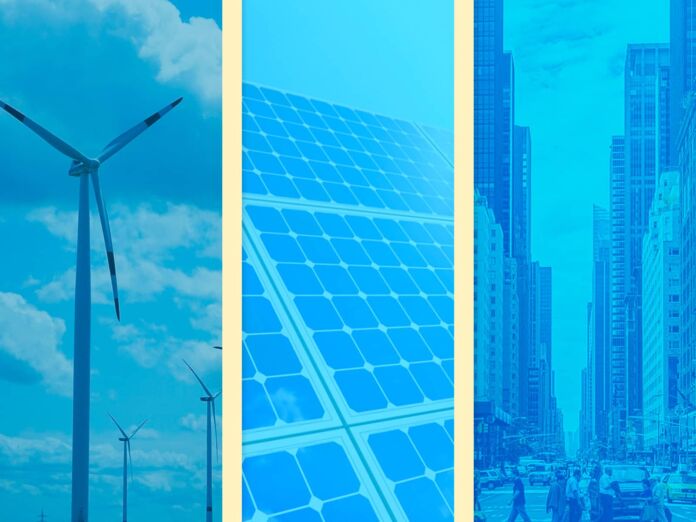
The world is brimming with untapped potential for innovative technology to address pressing environmental issues. And in the energy sector, cellular IoT has emerged as a powerful tool to enable more efficient power generation, distribution, and consumption.
Through a range of use cases, the Internet of Things (IoT) devices are providing real-time data and insights that can help energy companies optimize infrastructure, reduce waste, and minimize their carbon footprint. Let’s some examples of cellular IoT use cases in the energy sector and their potential impact on the future of sustainable energy.
4 Cellular IoT Use Cases
#1: Smart Grid Management
One of the most transformative applications of cellular IoT in the energy sector is in the field of smart grid management. Traditionally, power grids have struggled to balance fluctuating supply and demand, leading to wasted energy and infrastructure inefficiencies.
With IoT-enabled sensors and devices, however, it’s possible to monitor energy usage in real time and dynamically adjust supply accordingly. This means that grids can become self-healing networks, automatically detecting and rerouting power in response to outages, system failures, or changes in consumption patterns.
By minimizing waste and maximizing efficiency, IoT-powered smart grids are helping to pave the way towards a more sustainable energy future.
#2: Energy Consumption Analytics
Another exciting area of opportunity for cellular IoT in the energy sector is in the field of energy consumption analytics. Through machine learning algorithms and predictive analytics, energy companies can leverage IoT-generated data insights to better understand patterns of energy usage and identify opportunities for optimization.
For example, building operators can use IoT-enabled sensors to monitor factors like temperature, humidity, and occupancy levels, and adjust heating, cooling, and lighting systems accordingly. By making more informed decisions about energy usage based on real-time data, companies can significantly reduce their energy consumption and costs, while simultaneously improving environmental sustainability.
#3: Energy Monitoring
One of the most essential steps towards a sustainable energy future is a transition towards renewable energy sources like wind and solar power. With cellular IoT, it’s now possible to monitor renewable energy infrastructure in real time, enabling energy companies to identify and address technical issues as they arise.
For example, measuring energy consumption across a growing network of EV charging stations will be critical as the adoption of electric vehicles continues to grow. Another example is solar energy, where sensors can be installed on solar panels to detect when they’re not functioning properly, and alert maintenance personnel for repairs.
This not only improves the efficiency of renewable energy infrastructure but also ensures that energy is generated and distributed most sustainably, reducing greenhouse gas emissions and preserving natural resources.
#4: Predictive Maintenance
IoT-powered predictive maintenance has a significant impact on energy companies’ bottom line, as well as on environmental sustainability. Through real-time monitoring of machinery, sensors can detect issues like wear and tear and abnormal operation patterns and predict when maintenance will be required.
By proactively addressing these issues, energy companies can avoid costly downtime and repairs, while simultaneously minimizing energy waste and pollution associated with inefficient or malfunctioning equipment.
eSIM Technology
The latest advancements in IoT have paved the way for smarter, more efficient energy systems. The integration of cellular IoT devices and sensors, in particular, is revolutionizing the way companies in the energy sector operate.
However, connecting these devices can be a daunting task, especially when there are thousands of them. But with the emergence of eSIM technology, connecting cellular IoT devices and sensors has become much more simple, seamless, and cost-effective.
With eSIM technology, companies in the energy sector can enjoy a host of benefits. For starters, there is the flexibility to switch between different wireless carriers on-demand, depending on the location and coverage requirements.
This flexibility allows companies to avoid unnecessary roaming charges and poor connectivity performance. Additionally, eSIM technology enables remote device management, reducing the need for “truck rolls” or on-site maintenance and support and overall support costs.
Bright Future with IoT
The energy sector presents a unique opportunity for cellular IoT to address some of the most pressing global challenges facing humanity today. By enabling smart grid management, energy consumption analytics, renewable energy monitoring, and predictive maintenance, IoT is helping energy companies optimize their infrastructure, reduce waste, and minimize their carbon footprint.
The future is bright for renewable energy, and with the transformative power of cellular IoT, we’re one step closer to realizing a more sustainable future for ourselves and generations to come.
Tweet
Share
Share
- Cellular
- Connectivity
- Energy
- eSIM
- Internet of Things
- Cellular
- Connectivity
- Energy
- eSIM
- Internet of Things
